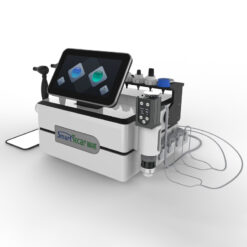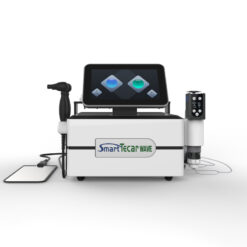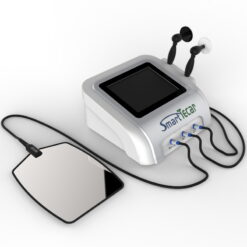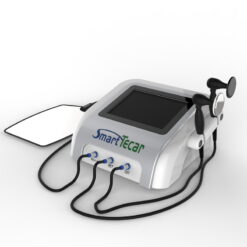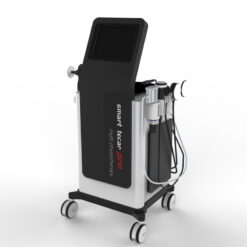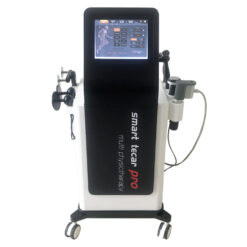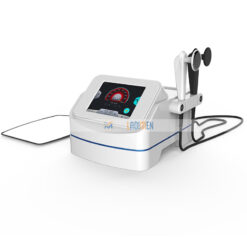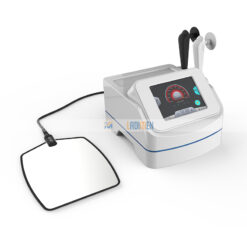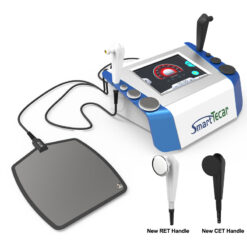what is tecar therapy machine:
TECAR therapy, also known as Capacitive and Resistive Energy Transfer (CRET), is a type of physical therapy that uses a specialized machine called a TECAR therapy machine. TECAR stands for “Transfer of Electric Charge and Capacitive Energy Resonance.”
TECAR therapy machines are commonly used in sports medicine, physical therapy, and rehabilitation settings to treat various musculoskeletal conditions and injuries. The therapy is non-invasive and aims to promote tissue healing, reduce pain, and improve functional recovery.
The TECAR therapy machine works based on the principle of energy transfer through the body’s tissues. It operates using two modes: capacitive and resistive.
- Capacitive Mode: In this mode, the machine generates an electric field that induces the flow of charged particles (ions) in the tissues. This movement of ions creates a deep and uniform heat within the tissues, stimulating blood circulation and increasing oxygen and nutrient delivery to the treated area. Capacitive mode is typically used for treatments involving more superficial tissues.
- Resistive Mode: In resistive mode, the machine generates an electric current that passes through the tissues. This current encounters resistance as it travels through the tissues, leading to the production of heat. The heat generated in this mode can penetrate deeper into the tissues, making it suitable for targeting deeper structures like muscles, tendons, and ligaments.
The combination of capacitive and resistive modes in TECAR therapy allows for targeted and controlled heating of tissues, promoting various therapeutic effects, including:
- Increased blood flow and oxygenation to the treated area, which supports tissue healing and regeneration.
- Reduced pain and muscle tension through the relaxation of muscles and improved circulation.
- Enhanced flexibility and range of motion by reducing tissue stiffness.
- Accelerated recovery from injuries and musculoskeletal conditions.
- Facilitation of tissue repair and collagen remodeling, which is beneficial for tendon and ligament injuries.
TECAR therapy is typically performed by trained physical therapists or healthcare professionals. The treatment duration and frequency vary depending on the specific condition being treated and the individual’s response to therapy.
As with any medical treatment, TECAR therapy should be used under the guidance and supervision of qualified professionals to ensure its safe and effective application for each patient’s unique needs.
how to tecar treatment:
TECAR therapy should be administered by a trained and qualified healthcare professional, such as a physical therapist or sports medicine specialist. As a non-invasive treatment, TECAR therapy requires proper knowledge and expertise to ensure its safe and effective use. Here are the general steps involved in using TECAR therapy:
- Patient Assessment: Before starting TECAR therapy, conduct a thorough assessment of the patient’s condition to determine if they are suitable for this treatment. Consider factors such as medical history, current symptoms, and any contraindications for TECAR therapy.
- Preparation: Prepare the patient for the treatment by explaining the procedure, its purpose, and what to expect during the session. Ensure the patient is comfortable and in a position that allows access to the target area.
- Application of the TECAR Machine: The TECAR therapy machine will have applicators for both capacitive and resistive modes. Select the appropriate applicator size and type based on the target tissues and the depth of treatment required.
- Capacitive Mode: In capacitive mode, the machine generates an electric field that induces the flow of ions in the tissues. This mode is typically used for more superficial treatments. Place the capacitive applicator at a suitable distance from the skin, ensuring good contact with the patient’s body. Adjust the intensity level to the prescribed setting.
- Resistive Mode: In resistive mode, the machine generates an electric current that passes through the tissues, producing heat. This mode is used for deeper treatments targeting muscles, tendons, or ligaments. Position the resistive applicator near the target tissues and adjust the intensity as needed.
- Treatment Session: Start the TECAR therapy session, with the machine delivering energy to the tissues in the selected modes. The treatment duration can vary depending on the condition being treated, but sessions typically last around 15 to 30 minutes.
- Monitoring: Throughout the session, monitor the patient’s response to the treatment, including their comfort level and any adverse reactions. Adjust the settings if necessary to ensure a comfortable and effective treatment.
- Post-Treatment Care: After completing the TECAR therapy session, provide the patient with any relevant post-treatment instructions. This may include recommendations for rest, activity modification, or home exercises to complement the therapy.
- Follow-Up: Schedule follow-up appointments as needed to assess the patient’s progress and determine if additional TECAR therapy sessions are required.
Remember that TECAR therapy should be part of a comprehensive treatment plan tailored to the patient’s specific condition and needs. Always adhere to the manufacturer’s guidelines and consult with experienced healthcare professionals for appropriate treatment planning and administration.







